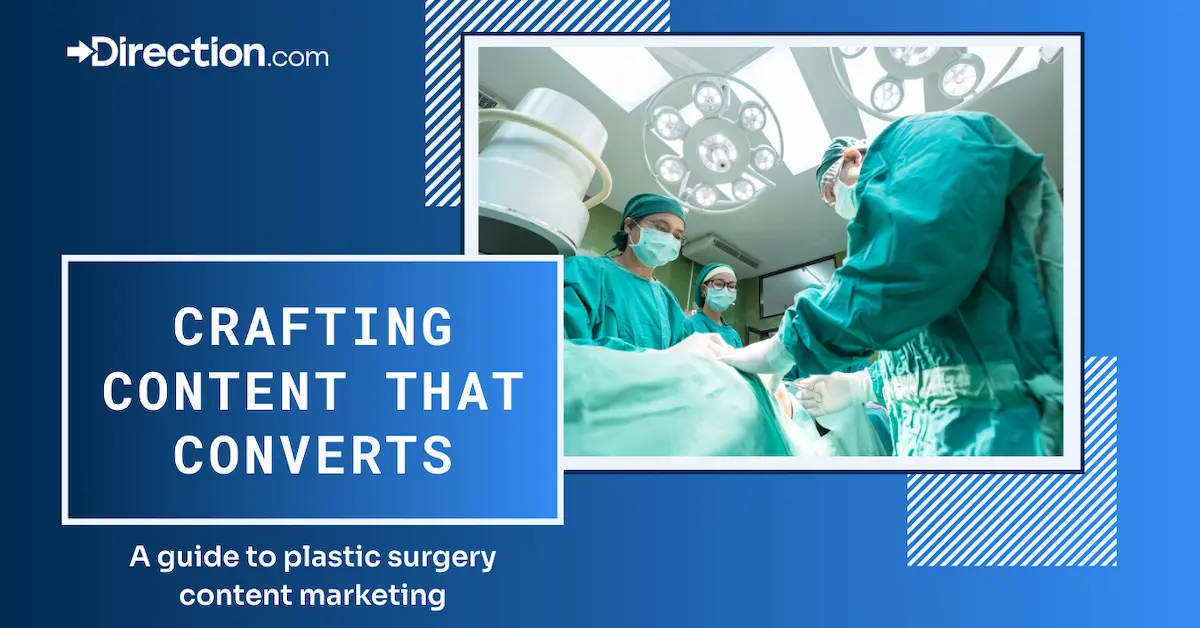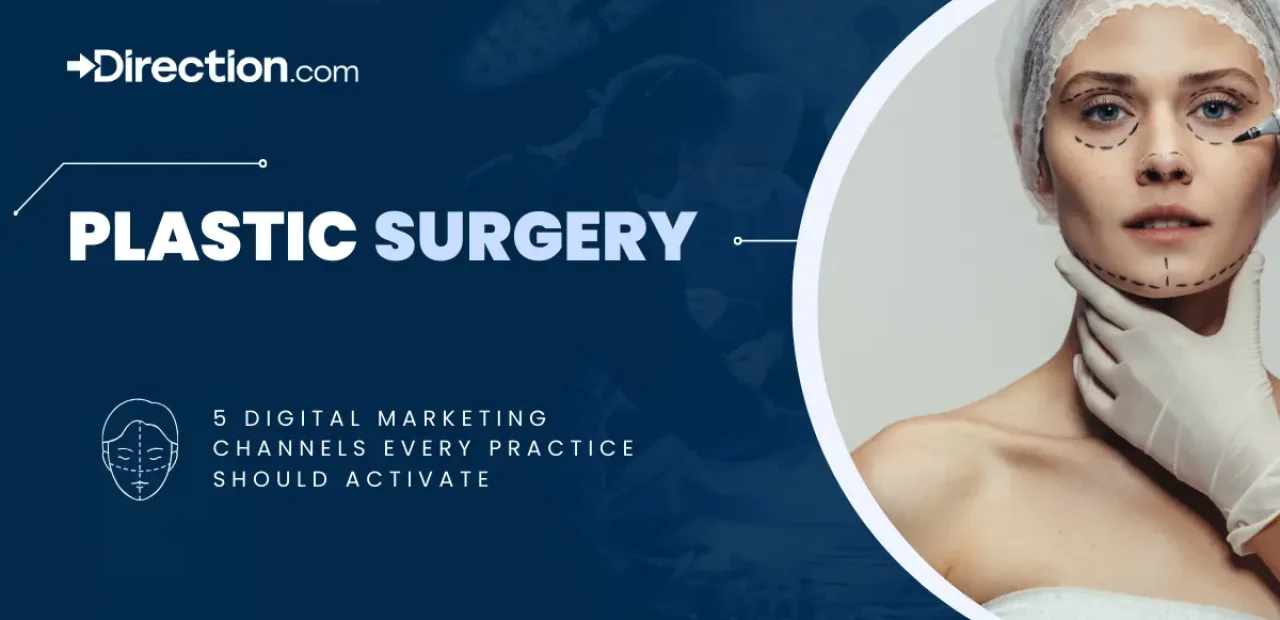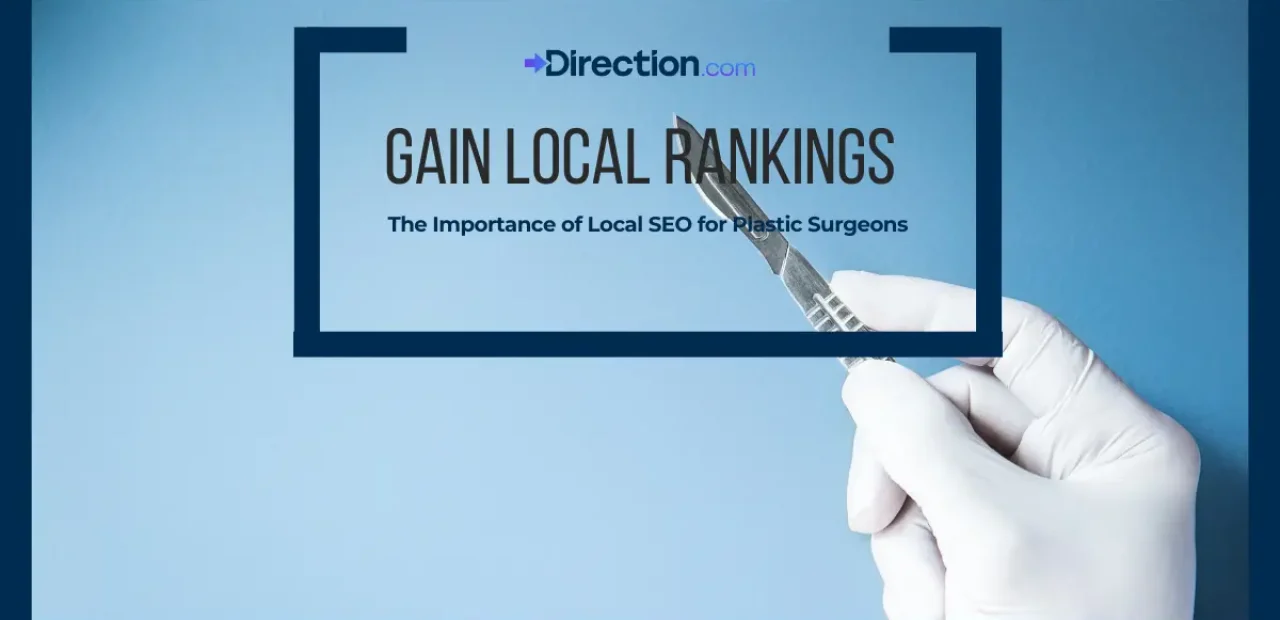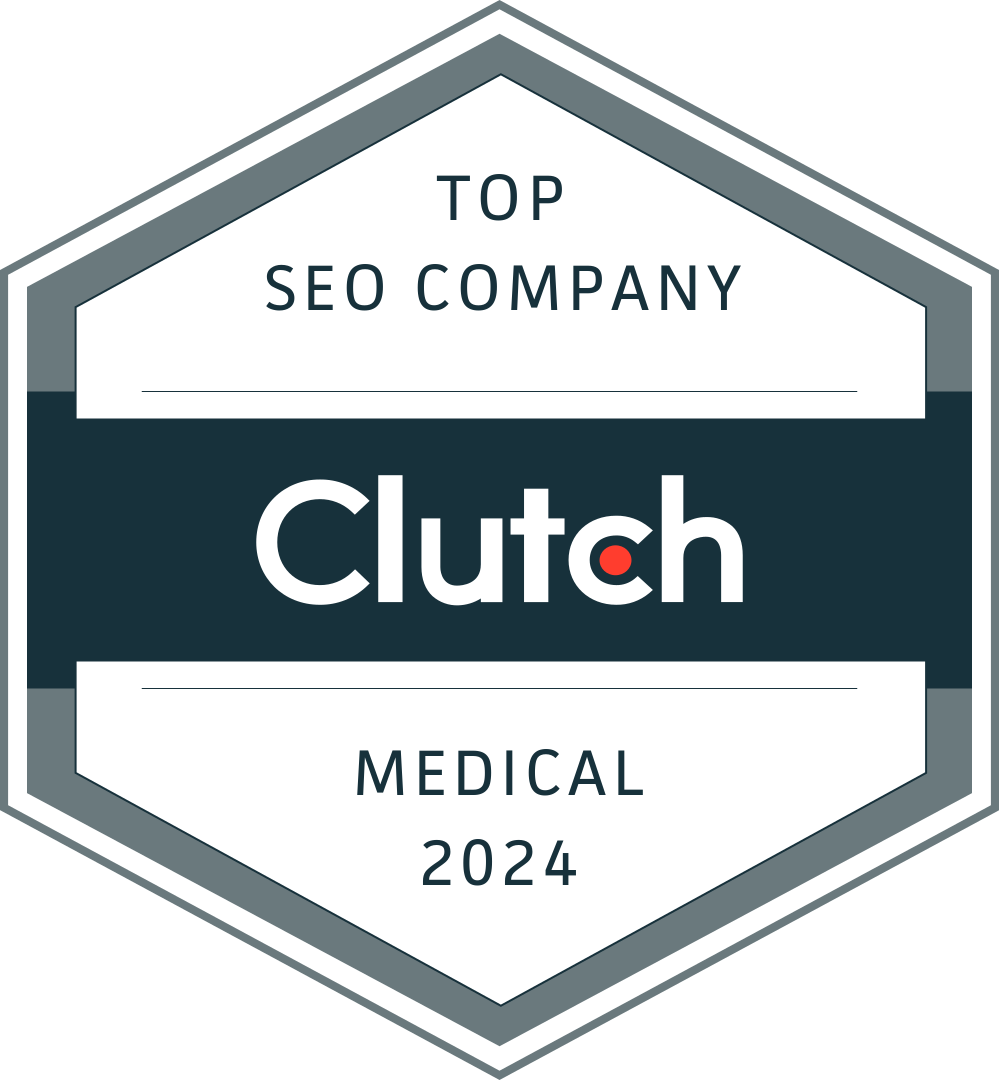“The synergy between engagement and SEO is undeniable. By creating content that not only ranks well but also deeply engages your audience, you’re setting the stage for sustained success.”
A few years ago I had a friend who was considering a mommy makeover. She had a million questions about the procedure, some of which I could answer since my team writes this type of content, but most required the expertise of a seasoned plastic surgeon.
In our line of work, we’ve uncovered that the magic of attracting patients to your plastic surgery practice lies not just in showcasing your services but in addressing the real concerns, questions, and aspirations of your patients.
What’s fascinating is how these insights tie back to a technical understanding of SEO and content marketing. By focusing on the specific needs and search behaviors of potential patients, we craft content that not only ranks well but also genuinely helps and guides readers through their decision-making process.
If you’re interested in learning more, I’ll share our strategic approach to selecting blog topics that resonate with potential patients. You’ll learn about the importance of empathy in content creation, how to leverage SEO insights to meet patient needs, and why storytelling should be at the heart of your content strategy.
Expect to walk away with a clear roadmap for creating blog content that not only attracts but also genuinely engages potential patients, setting the stage for a deeper connection and trust with your practice.
What You’ll Learn
- Decipher the latest trends in plastic surgery to stay informed and make educated decisions about your healthcare journey.
- Unlock the secrets to choosing the right procedure for your unique body and goals, leveraging our deep understanding of patient needs and outcomes.
- Analyze real-world results through case studies and data from our clients, providing you with a clear picture of what to expect.
- Discover the most effective pre- and post-operation practices to ensure a smooth recovery and optimal results, curated from our extensive experience with clients.
- Identify how to find a reputable plastic surgeon using insider knowledge on qualifications, experience, and patient reviews.
- Learn how to maximize your investment in plastic surgery with strategic advice on financing options and long-term care strategies.
First Off, You Have to Map the Patient Journey
Understanding the patient’s journey from interest to recovery is vital in crafting content that converts.
We break down this journey into key stages: Awareness, Consideration, Decision, and Recovery.
At each stage, the patient has different informational needs. For example, during the Awareness stage, a patient might be searching for “Signs you might need a rhinoplasty,” while in the Decision stage, they’re more likely to search for “Best rhinoplasty surgeons near me.”
Highlighting key stages where information is most needed allows us to create hyper-relevant content. As part of our strategy, we deployed hyper-relevant articles that catered to each stage of the patient journey. These articles were not only SEO-friendly but also designed to answer specific questions, reducing the friction in the patient’s journey from awareness to decision.
Creating content that speaks to patients at each stage of their journey proved to be a highly effective strategy. For instance, during the Recovery stage, patients often search for tips to ease their recovery process. By providing valuable content on this topic, we helped our client’s website become a go-to resource for post-surgery care, thereby fostering a deeper connection with their audience.
Remember, successful digital marketing is not just about keywords and backlinks; it’s about genuinely understanding the concerns and questions of your patients and addressing them through strategic, informative content.
Secondly, You Have To Understand Your Patients’ Concerns to Create Compelling Blogs
Let me share a story that perfectly illustrates why understanding your patients’ concerns is critical in healthcare SEO.
Not too long ago, we worked with a clinic that was struggling to connect with their target audience online. Despite offering top-notch services, their digital presence wasn’t reflecting their expertise or addressing the real concerns of their potential patients.
It was only after diving deep into the patients’ most pressing questions and misconceptions that we managed to turn things around for them. This experience underlined a truth we often forget: at its core, SEO is about understanding people and adding value to their search journey.
So, we took the following approach to kickstart our content strategy for this client:
1. Addressing common misconceptions about plastic surgery was our first step
Many people believe plastic surgery is purely cosmetic and frivolous, ignoring its significant reconstructive and psychological benefits. Through precise language and technical explanations, we crafted content that debunked these myths, providing clear, medically backed insights into the variety of procedures and their impacts on patients’ lives.
2. Answering frequently asked questions became our next focus
We utilized detailed analytics reports to identify what potential patients were searching for online. Questions ranged from the risks involved in specific procedures to recovery times and costs.
By creating content that directly addressed these queries, we not only improved our client’s search visibility but also positioned them as a trusted authority in the field.
Leveraging this angle to choose effective blog topics formed the foundation of our strategy and helped us to build out more effective content silos.
Instead of generic posts, we now had a rich source of blog topics that resonated with our target audience. For example, a blog post titled “What to Expect During Your Recovery from Rhinoplasty” addressed a common area of concern, attracted significant traffic, and allowed us to expand on this topic comprehensively.
10 Plastic Surgery Blog Topics Proven to Rank
When we dive into crafting content for plastic surgery, we’re not just sharing information; we’re addressing deeply personal questions, concerns, and aspirations.
Here’s a breakdown of the top 10 plastic surgery blog topics, chosen for their relevance, search demand, and potential to engage and inform prospective patients.
- The Realities of Recovery: Detailed posts about what patients can realistically expect during the recovery from various procedures not only set clear expectations but also position your practice as caring and transparent.
- Before and After Care: Guidance on how to prepare for surgery and care for oneself afterwards is invaluable. These posts can be technical, offering a blend of medical advice and practical tips.
- Technological Advances in Plastic Surgery: Exploring the latest innovations positions your practice as a leader in the field. These pieces can delve into the technicalities of new procedures and devices, explaining their benefits and limitations.
- Costs and Financing Options: A topic of immense interest, posts about the financial aspects should be clear, providing detailed explanations of costs, payment plans, and insurance considerations.
- Procedure Comparisons: Comparing similar procedures helps patients make informed decisions. These posts should detail the differences, recovery times, and potential results of each option.
- Addressing Common Concerns: Posts that candidly discuss common fears and questions about plastic surgery can demystify the process and reassure potential patients.
- Case Studies and Success Stories: Sharing real-life examples of successful surgeries can inspire and build trust. These should respect patient privacy while highlighting your practice’s expertise.
- Risks and Complications: It’s essential to discuss the potential risks associated with procedures. Honest, straightforward posts about complications can help build trust and set realistic expectations.
- Lifestyle Content: Posts about lifestyle, such as diet and exercise recommendations post-surgery, can support patients in their recovery and beyond, fostering a holistic approach to health and beauty.
- FAQs: A compilation of frequently asked questions, answered with clarity and depth, can be an invaluable resource for prospective patients at any stage of their decision-making process.
Approaching these topics requires a delicate balance of technical precision and empathetic communication.
By weaving in accurate medical information with patient-centric advice, you can create content that not only informs but also comforts and empowers your audience.
Using Real-world Examples and Testimonials in Your Blogs
Patient testimonials and success stories are a very powerful tool in your arsenal – they bring abstract concepts and procedures to life, providing tangible evidence of your practice’s impact on individuals’ lives. However, incorporating these into your blog posts requires a nuanced approach.
Real-world examples should always respect the privacy and dignity of the patients involved. Anonymity, consent, and sensitivity are paramount.
When we include these narratives, we do so with the utmost care, ensuring authenticity and compliance with HIPAA regulations. Testimonials can transform a standard blog post into a compelling story of transformation and hope. They underscore our expertise, not through self-promotion, but through the voices of those you’ve served.
Boosting Engagement and SEO
Let me share a quick story. We recently worked with a mental health clinic who was struggling to make an impact online (while this is a different speciality, the lessons are the same). Despite having valuable services, their website traffic was lackluster, and engagement rates were low.
After a comprehensive audit, we identified several areas for improvement, focusing on both engagement and SEO. The transformation was remarkable – not only did their organic traffic increase to provide over 50,000 visitors a month, but the time spent on their site doubled.
How did we do it? Let’s dive in.
Engagement Techniques
Engagement is the lifeblood of any website. It’s not just about attracting visitors but making them stay, interact, and convert. Here are some techniques we’ve found incredibly effective:
- Utilizing interactive content to keep readers engaged: Interactive content such as quizzes (like this one we made for Therapy Unlocked), surveys, and interactive infographics can significantly increase the time users spend on your site. These tools not only provide value but also entertain and educate your audience in a memorable way.
- Implementing storytelling techniques: Nothing captivates a reader more than a well-told story. By weaving patient success stories or the history of your healthcare practice into your content, you create a personal connection with your audience. This approach not only enhances engagement but also builds trust.
- The importance of visual aids and how to use them effectively: Humans are visual creatures, and the right imagery can convey complex information more efficiently than text alone. Infographics, videos, and high-quality images can break up text, making your content more digestible and engaging.
For example, when we implemented a series of interactive infographics on a client’s site explaining various healthcare procedures, we saw a 40% increase in page engagement rates. This not only improved user experience but also significantly reduced bounce rates.
SEO Best Practices
SEO is ever-evolving, but certain foundational practices remain critical for success. Here’s how you can optimize your content for search engines:
- Using keywords effectively in your content: Keywords are the compass that guides your content strategy. However, stuffing your content with keywords can do more harm than good. Instead, focus on integrating them naturally into your headlines, subheadings, and throughout your content where it makes sense contextually.
- Optimizing images and headings: Every image on your site offers an opportunity to enhance your SEO through alt text, while headings help structure your content not only for readability but also for search engines. Utilizing keywords in your headings and alt text can significantly improve your content’s visibility.
- Understanding the ideal content length and structure for SEO: Long-form content tends to rank better in search engines, provided it’s high quality and offers value. Aim for a structured format with clear headings, subheadings, and bullet points to improve readability and SEO.
All in all, boosting engagement and SEO requires a keen understanding of your audience, technical know-how, and a strategic approach to content creation.
By focusing on interactive and visually appealing content, alongside SEO best practices, you can significantly improve your website’s performance. Remember, the goal isn’t just to attract visitors but to keep them engaged and convert them into loyal patients or clients.
It’s a continuous process of refinement and innovation, but with a data-driven approach, the results can be transformative.
Unleash Your Practice’s Potential with Expert Plastic Surgery SEO
Standing out in the plastic surgery niche requires more than just a basic understanding of SEO; it demands specialized expertise, a deep comprehension of patient behavior, and a data-driven approach to content creation.
We’ve honed our skills in healthcare SEO, particularly in plastic surgery, to craft strategies that not only attract but convert prospective patients.
Our approach is rooted in leveraging deep data analysis and proprietary technology for rapid deployment of hyper-optimized landing pages, understanding and complying with HIPAA regulations, and creating content that adheres to EEAT principles.
This multi-layered approach ensures that your practice doesn’t just rank higher in search results but also establishes a strong online authority that resonates with patient needs and concerns for the longterm.
To ensure your practice not only thrives but leads in the competitive landscape of plastic surgery, here are your next steps:
- Review your current SEO strategy and identify areas for improvement.
- Consider how a specialized healthcare SEO approach could transform your patient acquisition efforts.
- Explore the benefits of partnering with a team that understands the intricacies of plastic surgery SEO.
Let’s connect on a discovery call so we can analyze your current online presence and competitors, and map a path toward search engine domination.






